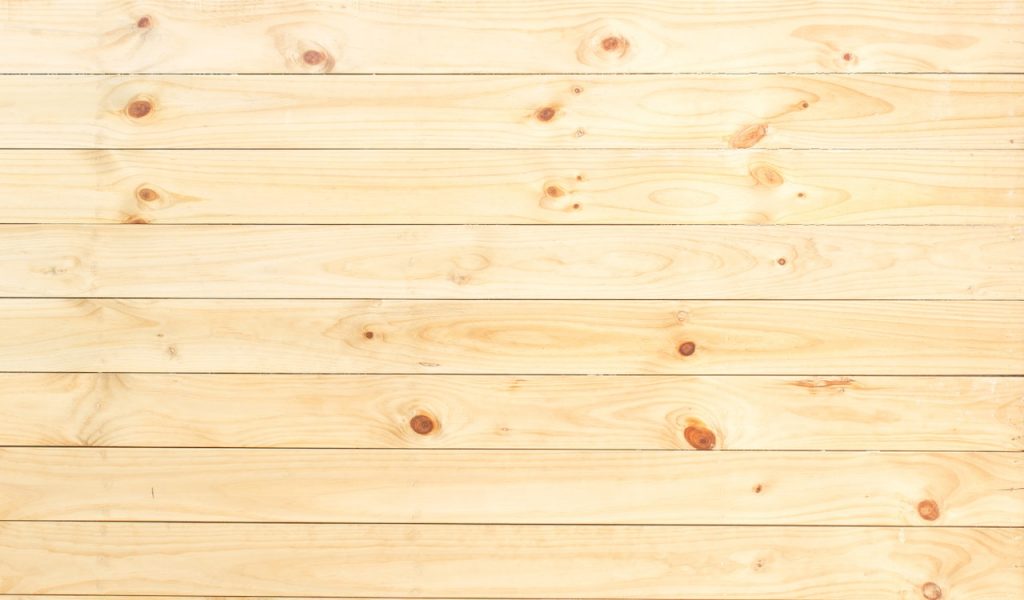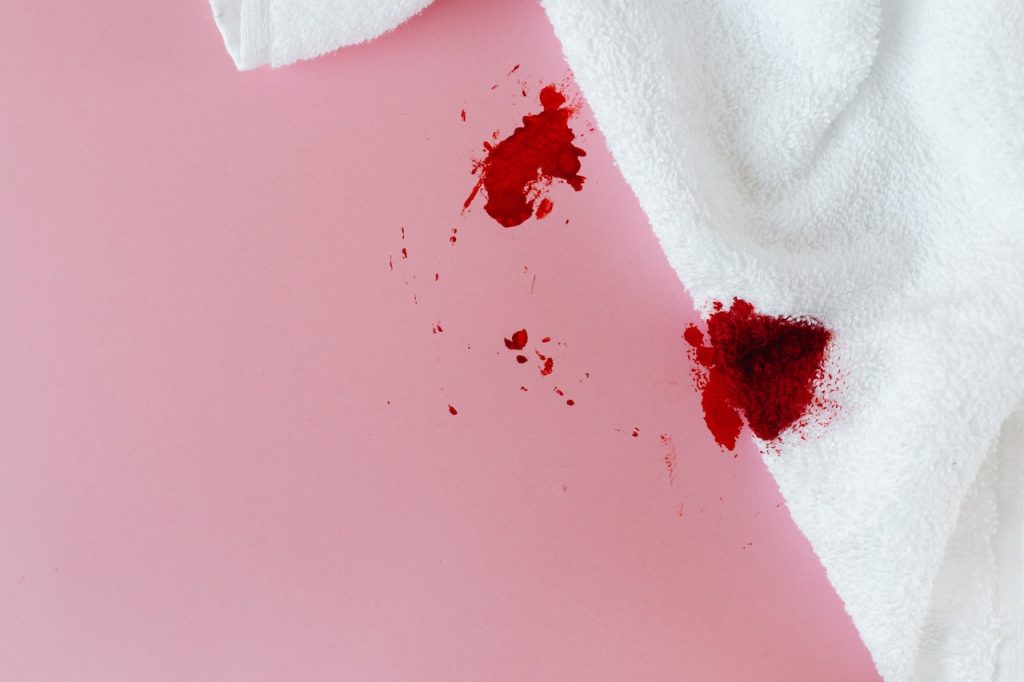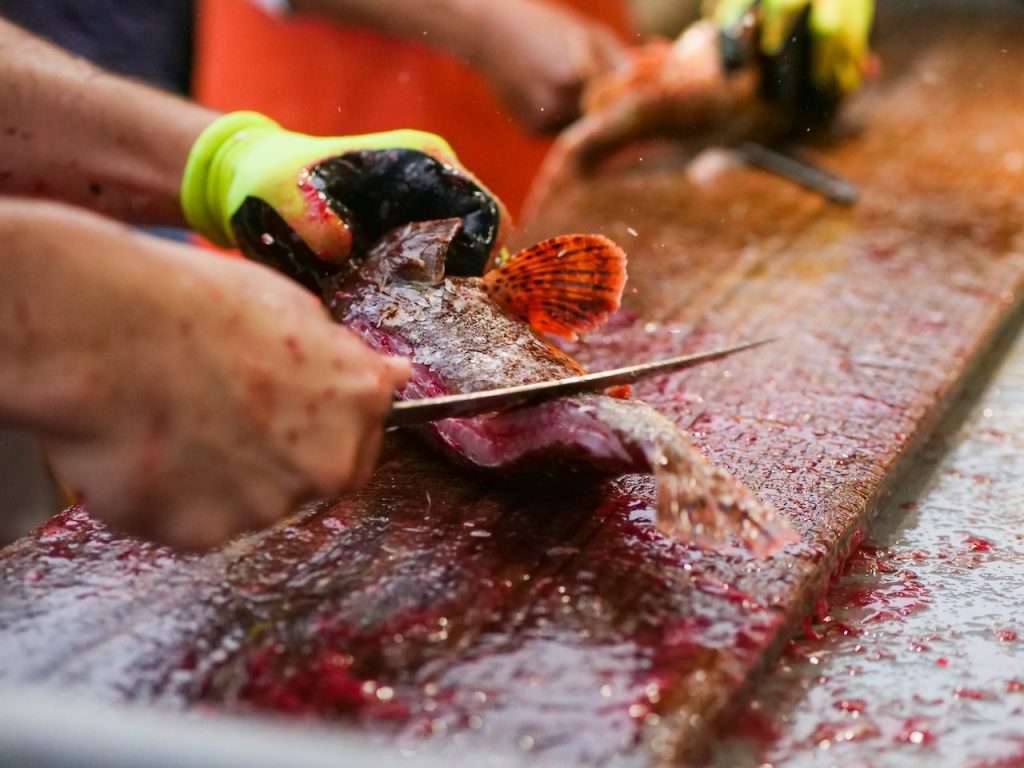Does your wood get blood, and is it hard to remove? Though blood stains are notoriously hard to remove from textiles & surfaces, there are several methods to try. Because blood includes hemoglobin, the protein that carries carbon dioxide and oxygen throughout the body, it is very difficult to remove. When blood stains dry, they appear dark, rusty, and brown and might become black.
Once you cut yourself or have another accident, you may wind up with blood spots in your house. In addition to being a horrible reminder of the accident or other incident that generated the stain, blood is frequently difficult to remove from certain surfaces. Wood is one of those surfaces that is notoriously difficult to remove blood stains from. If not removed promptly, these blood stains may penetrate your timber floor and permanently discolor it.
As a result, blood stains are the most annoying since you must care for the wounded person and the resulting stains, lest your valuable hardwood floor is damaged. Continue reading to learn how to remove blood stains from a wooden surface, such as a wood floor, a wood countertop, a chopping board, or even a wooden piece of furniture.
Proper Ways to Remove Blood from Wood
Wood flooring and furniture are constantly exposed and hence readily stained. Untreated wood, on the other hand, is more likely to accumulate deeper stains since it lacks finished wood protection. Blood stains may be removed from treated and untreated wood using various procedures. Here are some steps to get blood stains on wood.
?Remove Blood Before It Can Stain
If you catch the blood before it can set into the wood and stain it, you can generally clean up the problem quickly and with little consequences. Soak up as much blood as possible using a paper towel. Always remember that dealing with and properly treating injuries comes first before cleaning up other things.
?Use Wet and Dry Cloth to Clean The Blood Stain
Wet the tip of one washcloth corner with cold water. The washcloth should not be overly damp since this may cause the blood to flow and spread the stain. Using the wetted tip of a washcloth, dab at the soiled area. Alternate between treating the soiled area with a wet towel and wiping any excess moisture with a dry cloth. Dip another corner of the wet cloth into the cold water and continue until the wet washcloth gets drenched and muddy. Continue until the wood’s surface is as clean as possible.
?Hydrogen Peroxide Treatment
At this time, there will almost certainly be some blood on the surface, or even the stain will be visible. In this scenario, repeat step 2, but use a cloth with the tip soaked in hydrogen peroxide instead. Try hydrogen peroxide if water isn’t enough to remove the stain fully.
?Bleach if Necessary
Before using bleach to remove stubborn stains, be aware that the bleach will most certainly discolor the wood. If you have a darker wood surface, avoid using bleach. The bleach may somewhat stain lighter wood. Apply a tiny quantity of bleach to the area using a moistened washcloth. After you’ve cleaned the discolored area to your satisfaction, thoroughly wash the surface of the wooden item with cold water.
Removing Blood on Wood and Anything

Although removing blood from wood might be difficult, various methods are available. First, dab the stains (as soon as feasible, if possible) with a paper towel, careful not to rub the blood into the wood. Sprinkle baking soda over the stain and let it sit for 60 seconds. Scrub carefully with a cleaning brush dipped in white vinegar. Mix half a spoonful of dishwashing liquid in a cup of cold water. Dip a clean cloth into it and see if you can erase the stain.
You may use a steel wool pad to remove dried blood from waxed hardwood, but don’t apply too much pressure, or you’ll leave scratches. If the steel wool successfully removes the blood, clean the area with a moist, clean towel. Some individuals use bleach to remove persistent blood stains, but the wood will need to be restained in most situations.
Do not use soaking-wet rags when cleaning blood from wood and another surface. This may cause the blood to flow and spread the stain even more. It is preferable to dab the discoloration using a moist towel.
?Upholstery and Carpet Fibers
If blood has stained your carpets or upholstery, you have numerous options for removing the stain. Bleach & hydrogen peroxide may also stain carpet and upholstery, so use dish detergent instead. To 2 cups of cold water, add one spoonful. Mix well, then blot with a clean white towel. Dab the stain with a solution until it vanishes, then blot it dry with a clean white towel and sponge it with cold water.
A carpet and upholstery cleaner intended to remove pet stains may be effective in certain circumstances. These are often enzymes that operate on blood stains. Some laundry pretreatment treatments include stain-removal enzymes as well. Apply as instructed, then rinse with cool water.
?Blood from Cloths
The stain determines the best approach to removing fresh or dried blood stains from clothing. For new blood stains, immediately soak the garment in cold water or set it under cold running water. You may scrape the discoloration with bar soap or a laundry preparation solution containing enzymes. Wash the item in warm water using fabric-safe bleach, but do not dry it until the stain is gone.
Dried blood stains may be pretreated and cleaned using fabric-safe bleach after being steeped in detergent or a stain remover combined with cold water. If the stain remains after you remove the item from the washing, you may soak it again. This time, soak 1 quart of water in 1 tablespoon of ammonia & 1 teaspoon of detergent for a few hours. Pretreat it and try washing it in your washer again.
?Blood on Grout
Use a sponge bathed in cold water to remove the discoloration. If the blood hasn’t dried completely, you may wipe it before it sinks into the grout. Wet a brush and put it into baking soda or even a powdered cleaner after the wipe-down. Scrub off the grout using this brush. After you’ve done cleaning the stains, properly rinse and dry the area. You may also use hydrogen peroxide to assist in the removal of blood from your grout.
?Wood Floors
Wood absorbs liquids fast. If a blood stain is freshly on the wood, wipe it right away before it seeps into the flooring. Blot the blood spot with a paper towel or a dry cloth. Rubbing the stain will only cause it to spread out or penetrate deeper into the wood. Sprinkle baking soda over the blood once it has been blotted. Allow the baking soda to settle for a minute while you fetch a brush. White vinegar should be applied to the brush. Scrub the area carefully with the brush. After cleaning the blood, wipe it down and dry it.
If this procedure does not work, try the following: After blotting the blood, make a detergent solution of 12 tablespoons liquid dishwashing detergent and one cup cold water. Use this solution to moisten a towel and wipe the blood off your wood flooring.
After you’ve dried your wood flooring, you may use steel wool to gently (very gently) scrape away any remaining blood. Steel wool is best used on waxed wood floors & urethane/polyurethane-treated wood floors; an unfinished wood floor might easily be scratched up and harmed by the steel wool.
?Mattress
Mattresses are difficult to clean since they cannot be soaked in water or cleaning chemicals. If there is a blood stain on the mattress, you may remove it by blotting it with a moist towel as much as possible.
?Concrete
Because concrete is porous, it absorbs whatever is poured on it. However, a bloodstain on concrete may be removed with the correct equipment and cleaning chemicals.
?Silk
Silk is a fragile, protein-based substance; thus, milder ways to remove bloodstains will be necessary. If possible, quickly rinse the item in cold water. Then use a light dishwashing liquid and salt to spot-treat it. Allow at least an hour for it to sit. Then, as previously instructed, wash. Hand-wash the item (preferred) or throw it in the washing on the delicate cycle.
Laundry detergent designed specifically for delicates, such as Woolite, should be used. Roll the item in a dry towel to absorb excess moisture before hanging it up (out of direct sunshine) to dry. Ammonia, bleach, enzyme-based cleansers, and any other specific cleaning agents other than basic dishwashing liquids or detergents should be avoided. Using the incorrect product might cause lasting harm to the cloth.
?Satin
Satin is also an extremely fragile material that should be treated with extreme care. If the blood is fresh, rinse it with cold water and treat it with salt and dishwashing solutions on the site. Allow it to rest for an hour before washing it with cold water & mild laundry detergent. To absorb any extra moisture, roll the item in a towel and put it flat on another dry cloth to air dry.
Common Household Items for Blood Stain Removal

If you have a new bloodstain, you must act quickly to prevent the stain from settling. If the item is washable, rinse it immediately with cold running water for a few minutes to remove as much of the stain as possible. Because hot water sets the stain, use cold water instead. You may attempt one or more of the following after rinsing with cold water to further break down the protein in the stain before washing the garment in cold water and laundry detergent.
Spray the stains with an enzymatic cleanser or a fabric stains pretreatment before washing them for more stain-fighting power. Here are some household items to use for blood removal.
?Hydrogen Peroxide
Allow 3% hydrogen peroxide to rest directly on the stain for a few minutes. Before washing, re-rinse the item. Tide-To-Go pens contain the active component hydrogen peroxide. Remember that hydrogen peroxide has a slight bleaching effect on certain materials, so test in an inconspicuous area first. Because hydrogen peroxide leaves no residue after evaporation, there is no need to rinse it out. Use a Tide-To-Go pen if you’re acquainted with them and have one on hand.
?Salt
After washing the stains with cold water, sprinkle them liberally with table salt, or soak the stain with bottled contact lens saline solution. Blot the discoloration with a moist towel or soak the item in cold salt water for several hours before washing.
?Soap
Most new bloodstains may be removed using a bar of hand soap, laundry detergent, and dish detergent, particularly if you have nothing else. Rub the cloth together to create a lather after applying the soap directly to the stain. Rinse with cold water & repeat until the stain is removed.
?Cornstarch
Cornstarch poultice is used to remove fresh bloodstains from textiles. If you don’t have cornstarch, you may use cornmeal or talcum powder instead. Make a thick mixture of cornstarch & cold water and apply it to the stain. Place the cloth in a dry, ventilated area to dry. To remove any dried residue, brush it off or vacuum with a brush attachment. Examine the material. If the stain remains, repeat the procedure.
This procedure is particularly useful for goods that should not be soaked in water, like cleaning furniture or a mattress. Allow the garment to dry after blotting any leftover stains with a moist towel.
?Cola
Cola has several home applications, including cleaning bloodstains from clothes. It’s also an excellent choice if you’re on the road and don’t have access to any other goods. Simply pour a little cola over the stain and let it for at least 5 minutes before washing. The acid in cola aids in the dissolution of the stain and prevents it from settling into the cloth.
?Vinegar
Vinegar is an excellent natural cleaner for most surfaces and textiles, including silks and satins. Pour in enough white vinegar to completely absorb the discoloration. Allow it to settle for a few minutes before repeating if required.
?WD-40
Blood stains are remarkably resistant to WD-40. Spray until the stain is completely absorbed, then wash the garment as directed above. It prevents the stain from settling into the fabric; therefore, apply it as soon as possible once the stain appears.
?Ammonia
Ammonia and water should be mixed in equal proportions. Using this solution, blot the discolored area of the cloth. Allow it to rest for at least Fifteen minutes before rinsing and washing the item as normal.
?Aspirin
Crush a couple of aspirin pills and mix them with cold water to produce a paste. Allow the paste to rest for at least 30 mins after rubbing it into the stain. As previously stated, wash the item.
?Baking Soda
Make a paste with baking soda and cool water. Allow it to rest for at least 30 minutes after applying it to the stain. The item should be washed as directed. You may use vinegar instead of water to have even more stain-fighting power.
Reminders and Tips

➦To prevent chemical mixing, rinse the object or area before applying the next product if you’re using more than one cleaning solution or procedure. Never combine bleach, ammonia, or other chemicals.
➦When cleaning up bloodstains, always use cold water.
➦As a precaution, treat the blood as though it is diseased, particularly if you have no clue who it belongs to. At the absolute least, use gloves to protect yourself.
Frequently Asked Questions
Is it possible to erase dried blood stains?
Soaking a blood-stained cloth in lukewarm water may break up the stain and make it simpler to remove. As usual, launder. A dried blood stain may sometimes be removed by soaking a blood-stained cloth and then washing it in a machine.
Is it possible for blood to soak through concrete?
Yes, blood can permeate concrete. Concrete is a porous substance that can absorb any liquid, even blood. If the blood remains in the concrete for many hours, it might dry and become difficult to remove. The longer the blood remains, the more difficult it will be to remove. The first suggestion is to clean the area with a scrub brush, bleach, and water to remove stains. You may also try sprinkling hydrogen peroxide over the affected area. Allow it to soak for 15 minutes before rinsing it with plain water.
How long does blood take to dry on wood?
In our investigation, the only surface materials with substantial variations in drying times were wood & linoleum (80th percentile 45 vs. 75 min). Anticoagulant treatment had little effect on extracorporeal drying times.
How do you remove blood from furniture?
Get your hydrogen peroxide bottles ready! Simply dab a little amount of hydrogen peroxide directly on the stain & watch the blood stain fade. Reapply as required to remove old or stubborn stains. After removing the stain, rinse the area with cold water to eliminate any peroxide that may have remained.
Is it difficult to extract blood from wood?
The best solution is a mixture of baking vinegar and soda. Begin by applying an even coating of baking soda to the dried blood stain and kneading it in with a dry cloth. Then, immerse a brush in vinegar & scrape the wood thoroughly. Wipe away the solution with a dry towel after the bubbling has stopped.
Final Thoughts
However, there are various methods for cleaning the blood and returning your carpets or wood floor to their original condition. If you’re wondering how to get blood out of wood or ways to remove blood from wood floors, this article can come in handy. Spilling blood on your carpet or wooden floor is unsettling. Don’t worry; you should be able to remove the stain by following the methods you read.

